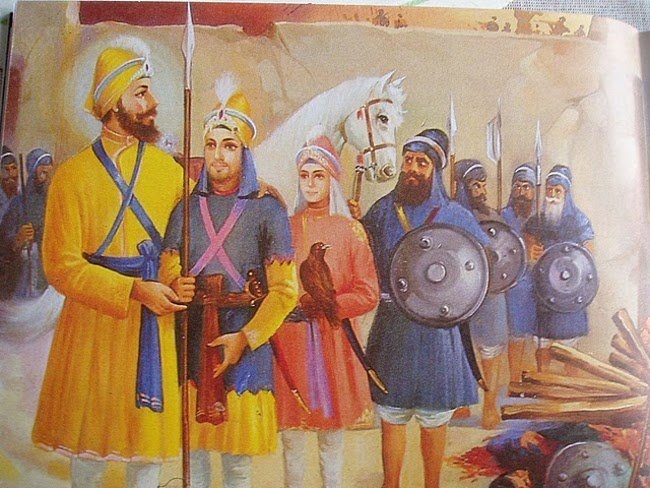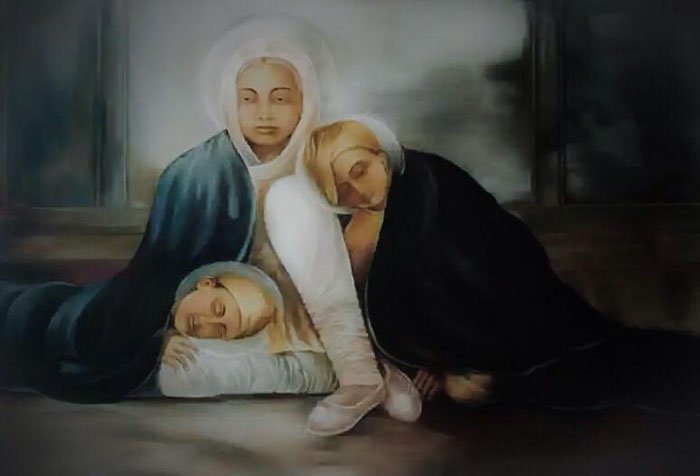[email protected]
Around us the world, particularly the Christians are busier than a bee celebrating Christmas. These are intriguing times for Sikhs across the globe as well. We celebrate the 350th anniversary of the birth of the Tenth Master, Guru Gobind Singh whose stewardship of the then 200 years old Sikh movement was transformational. He put the finishing touches to the Sikh message. Guru Gobind Singh fought many battles with the forces of that time that were inimical to Sikhi – the Islamists of the day aided and abetted by Hindu chieftains and satraps who were intolerant of the universal but unique message of Sikhism.
Many historians, as well as some kathavachaks, look at this as a “lost” battle. For better than 300 years Sikhs worldwide have been commemorating the siege and “fall” of the fort of Chamkaur in December 1705. Our local gurduaras are now in the midst of elaborate commemorations.
And that’s the way most, if not all, historians – Sikhs or non-Sikhs -- have looked at it as a historic fall and setback to the Khalsa led by Guru Gobind Singh. My take is more nuanced and different.
History tells us that Anandpur was besieged by an overwhelming force of the Imperial troops and their Hindu ruling allies. Anandpur was vacated by Guru Gobind Singh on the night of December 5th and 6th accompanied by his family and four sons, because the besieging forces had falsely promised the Guru safe passage. The column of Sikhs and their Guru was attacked enroute. They reached the Sirsa River which was in spate. The Guru and his two older sons, Ajit Singh and Jujhar Singh with a small retinue of Sikhs successfully forded the river and reached Chamkaur on the evening of December 6th. But in the process they got separated from the two younger sons, Zorawwer Singh, barely 9 years old and Fateh Singh who was almost 7, and also their grandmother, the Guru’s mother. Such was the chaos of battle.
History tells us that there were few Sikh warriors with Guru Gobind Singh when he arrived at Chamkaur. With the Guru were his two older sons. The Imperial troops, egged on and abetted by the local Hindu chieftains, saw an unparalleled opportunity to deliver a final lethal blow to the Sikh movement. And they seized the moment. Carpe diem, as they say.
The battle raged fiercely. The numbers of fighters on each side were grossly mismatched. The Imperialist enemy forces were larger than the Sikh defenders by a magnitude. This meant that from within the fort Sikh fighters emerged in groups of five one sally at a time, to engage the enemy and they fought until martyred. Then a new Sikh fighter emerged from the fort to carry the battle forward. Thus, Ajit Singh and Jujhar Singh, the two older sons of Guru Gobind Singh, attained martyrdom.
Days later, because of the perfidy of their attendant Gangu Brahmin, these young boys barely 7 and 9 years old, along with their grandmother were in the custody of the Nawab of Sirhand. At a trial in a kangaroo court where they pointedly refused to recant their faith, the two were sentenced to death and bricked up alive.
Do these events mark a historic defeat and setback for the Khalsa and Guru Gobind Singh as many historians posit even while they charitably underplay it and gloss over it?
Most readers know the details so I will not touch them any further. Today, I aim to offer you a slightly different perspective on it. My take today is not a tear jerker at all. These weeks, sermons in gurduaras repeat the message of a setback in Sikh fortunes by the fall of Chamkaur. Just days ago we heard a good one along these lines and then when at home those close to me took the same direction as well, they jolted awake my contrarian instincts.
Why didn’t Guru Gobind Singh and his few surviving Sikhs set up a stand like the small unit of barely 21 Sikhs at Saragarhi 200 years later? In this every Sikh perished in a historic battle with Afghani hordes and won top honors and medals for courage?
Think a moment with me. The war of life offers us a plate full of battles. Ergo any significant war is likely to be composed of many battles.
A good commander will see the whole vista that is the sum of many parts; the larger scene of many possible or active fronts, as well as the particular battle being fought at that specific time; weigh the resources at his command and the relative strength of the enemy. Visualize the long-term repercussions of a contemplated action, and order a strategic change of tactics that allows a resifting and retooling of energy and tactics. Look at any major war and the shifting fronts and tactics that often dot the landscape.
This is how battles are defined and conducted. And I would say that this is what the Guru did, considering that he had only 5 Sikh fighters left with him and they were surrounded in hostile territory by hordes in the thousands. A suicidal mission would have been dramatic but then what… perhaps unproductive.
Allow me to illustrate my view with a trivial but tangential detour and not so dramatic an example to buttress my argument. About 50 years ago I was a student and, like most students, perpetually short of funds. So I looked for a night job. When I appeared for the interview the boss looked askance at my turban; this was a time when I was perhaps the only man with a turban in that part of the United States.
The minimum pay scale then was $1.50 an hour. Without explanation or pause he offered me $1.25. I was flabbergasted but desperate. I did not have the wherewithal to mount a legal challenge, nor was there any community nearby to offer solace, comfort or encouragement. So I accepted the illegally lower wage but kept my turban. My job was to precisely mix chemicals in 50 gallon drums to process thousands of color films every night. (This was way before digital cameras.) Two weeks later, my boss realized that I was a reasonably educated graduate student and knew sufficient chemistry as well. He promptly doubled my salary and all turned out well.
My justification: It seemed wiser to shift tactics than to engage in a head on battle for which I lacked resources and was unprepared. I felt in my heart that my gentler tactics would work out. If Guru Gobind Singh shifted tactics at Chamkaur the only question is this: Was the Guru successful in the long run? On that, history offers us an unqualified and resounding “yes.”
Sikhi survived the events at Chamkaur. In fact it was emboldened. Within a few years Sikhs had liberated Punjab from the Imperialists and established a governing system where the people were sovereign and self rule prevailed.
No one can argue with the truism that we all must die, no matter how virtuous, strong or admired in life. But how long does the world, even our most intimate kith and kin, remember us? Perhaps a day, a week, a month or a year; sometimes at memorial meetings for colleagues at the office it may be as little as thirty seconds. In the larger scheme of things these remain merely the blink of an eye.
It has been over 300 years since the happenings at and about Chamkaur and how well do we remember the four sons of Guru Gobind Singh? Every year without fail! The past is a prelude to the future so how long will we continue to remember them? I would say as long as there are Sikhs – through the end of time, I would guess. Let these four sons of the Guru remain our inspiration – yesterday, today and tomorrow. There was no compromise, merely a resourceful shifting of battle grounds and tactics. And this is the question that life often drops in our overfilled inbox.
Now Chamkaur and its history are embedded in the Sikh DNA. There could be no better outcome. The danger of ignoring such lessons and opportunities is that one can win battles and still lose the war.
[email protected]
December 22, 2015


